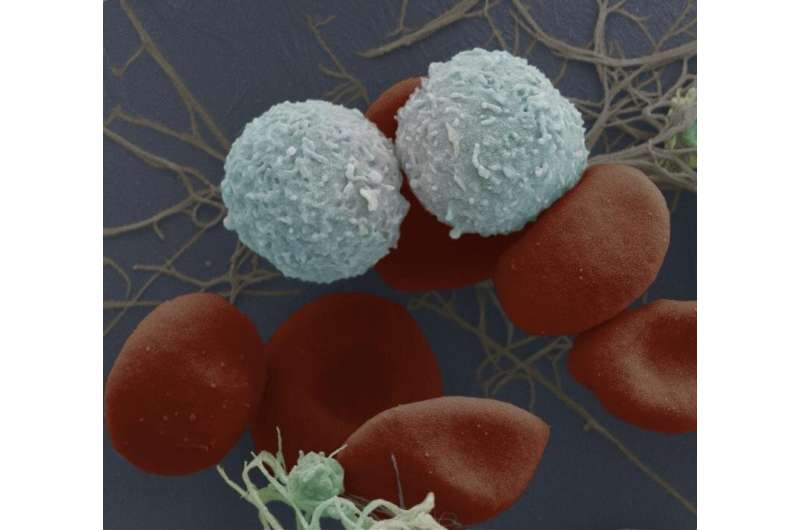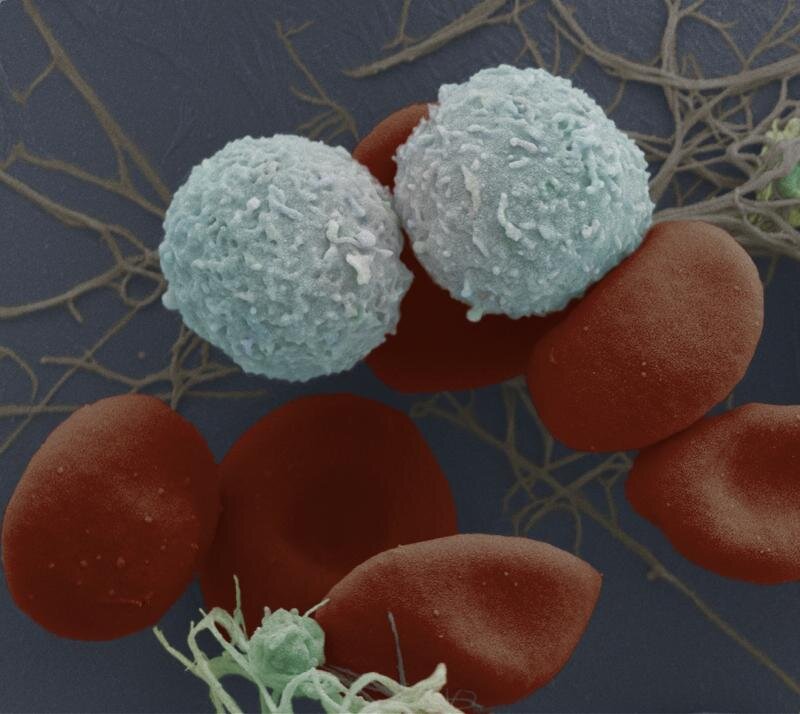
Researchers led by the Francis Crick Institute have found that blocking a particular protein could offer a new way to target leukemic stem cells without causing harm to healthy stem cells.
More than 3,000 people are diagnosed with acute myeloid leukemia (AML) each year in the U.K., including 100 children. After diagnosis, people with adverse genetic markers only have a 15.3% chance of surviving over five years.
Despite research leading to increased levels of understanding about the disease, the mainstream therapies for acute leukemias, including AML, have remained largely unchanged for many years. They often involve treatments like chemotherapy and stem cell transplants, that can have severe side-effects.
In their study, published in Science Translational Medicine, the researchers investigated the role of the protein, CKS1, in leukemic stem cells. These cells are able to self-renew and are often the cause of the disease relapsing after treatment.
Examining leukemic stem cells and other AML cells taken from patients with the disease, the team found that the cancerous stem cells have the highest concentrations of this protein.
When they blocked CKS1 in mice with the human cancer cell grafts, they observed a reduction in the number of leukemic stem cells, suggesting this protein is vital to their self-renewal capabilities. Importantly, this did not harm healthy stem cells and, in fact, provided a protective effect for these healthy stem cells from some of the side-effects of chemotherapy. For example, it protected stem cells in the gut, which are often harmed during chemotherapy which can lead to infection in the gut.
Further studies revealed that these opposite effects on leukemic and healthy stem cells is due to how the inhibition of CKS1 triggered the build-up of a harmful molecule, ROS, in the cancerous stem cells but not in the healthy stem cells.
“We hope that this work will open new avenues of investigation into the protein dynamics of stem cells, and give us a better understanding of how stem cells work in our body and how they go wrong during disease.
“In doing so we hope that we can reveal new and more effective treatment targets that haven’t yet been discovered,” says William Grey co-corresponding author and researcher at the Crick and University of York, who is funded by Leukemia UK.
“This work uncovers valuable information about leukemic stem cells, a group of cells important to survival of the cancer. While there is still a lot to be done before this work could lead to new treatments for patients, by finding a way to potentially block these cancerous stem cells without harming healthy stem cells is promising,” adds Dominique Bonnet, co-corresponding author, and group leader of the Hematopoietic Stem Cell Laboratory at the Crick.
This research used samples taken from patients and the experiments took place in the laboratory, in cells and in mice models. Many further studies and clinical trials will be needed before the findings could result in a change in how people with leukemia are treated.
Source: Read Full Article
